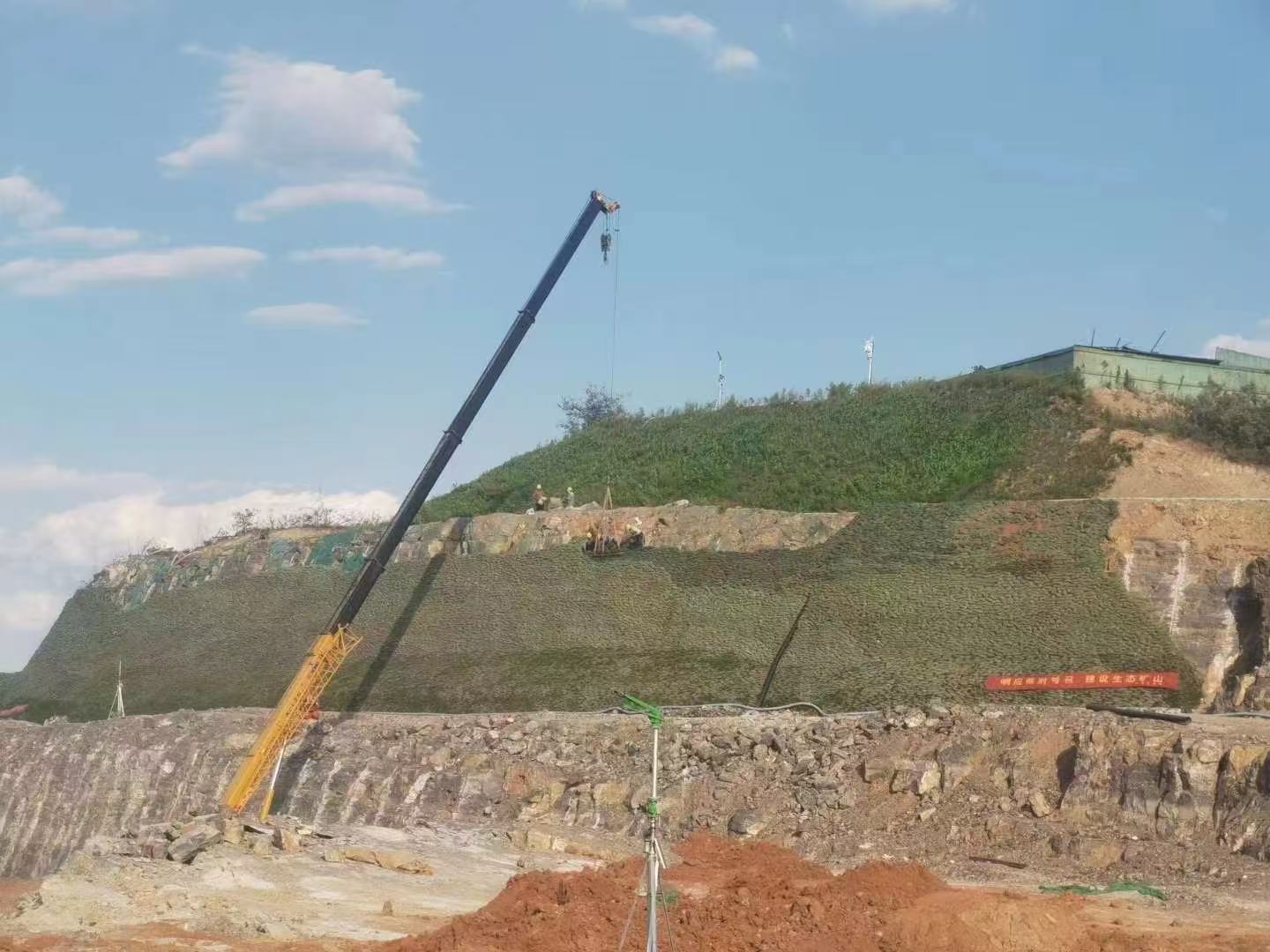Case application of ecological bag slope protection
In the overlapping area of engineering construction and ecological protection, slope stability has always been a key issue that cannot be avoided. Traditional slope protection methods either rely on hard materials to resist rigidly or have delayed ecological restoration. However, the emergence of ecological bags has opened up a new path of "combination of rigidity and flexibility, ecological symbiosis" for slope protection projects.
I. Project Origin: A Tricky Slope Problem
In the construction area of a certain project, a high and steep slope fell into a dilemma of "loss of water and soil" due to early excavation disturbances and long-term rain erosion. The soil on the slope was loose, and small-scale landslides occurred locally. If left unchecked, it would not only threaten the safety of surrounding construction but also aggravate ecological damage. Under the demand of "safety first, ecological coordination", the ecological bag slope protection scheme stood out and became the core to repair this "ecological scar".
II. Ecological Bags: The "Green Cells" for Slope Protection
The selected ecological bags are not ordinary woven fabrics, but high-strength, well-permeable and degradable "ecological containers" made by special processes. The bags are filled with a "customized formula": based on locally adapted soil, mixed with organic matter that retains water and fertilizer, biological agents that promote root growth, and embedded with grass seeds such as bermudagrass and alfalfa that are barren-resistant and erosion-resistant, as well as shrub species such as lespedeza with shallow root systems, laying the "seeds of vitality" for vegetation growth in advance.
III. Construction: Transformation from "Stacking" to "Symbiosis"
(I) Slope Pretreatment: Laying a Solid Foundation for Ecological Bags
The construction team first "examined and debrided" the slope, removed floating stones and debris, and used small machinery supplemented by manual work to smooth the uneven slope, while reserving drainage grooves. This step is like creating a "fitting bed" for the ecological bags, ensuring that the subsequent laying is tight and stable, and avoiding overall landslides caused by loose foundations.
(II) Laying of Ecological Bags: Weaving a Green Protection Net
The ecological bags are laid in an orderly manner by means of "staggered stacking + anchor reinforcement". Workers closely connect the bags, like building a giant "ecological building block". Every three layers, a geogrid is set for reinforcement to enhance the structural tensile strength; the bags are locked with special connecting buckles, and then anchored into the slope with anchor rods, so that the entire ecological bag structure is "integrated" with the slope. The small gaps deliberately left between the bags not only reserve space for plant growth but also guide the orderly infiltration of rainwater, avoiding slope runoff erosion.
(III) Vegetation Activation: Awakening Green Vitality
After laying, the team adopted a two-pronged approach of "surface spraying + drip irrigation maintenance". A high-pressure spray gun was used to evenly spray the nutrient matrix containing humus and water-retaining agents on the surface of the ecological bags, like spreading a "growth cushion" for the seeds; at the same time, an intelligent drip irrigation system was set up to accurately replenish water according to the weather and soil moisture, ensuring that the grass seeds break through the shell and germinate within 7-10 days, and the slope shows initial greenery in about 30 days.
IV. Results: A Two-way Pursuit of Ecology and Safety
(I) The Slope is Stable: From "Dangerous" to "Solid as a Rock"
After the test of the rainy season, the ecological bag structure showed strong "compressive toughness". The mechanical strength of the bag itself, combined with the "biological reinforcement network" gradually formed by plant roots, increased the erosion resistance of the slope soil by more than 80%. No obvious deformation occurred in the area where landslides were frequent, building a solid safety barrier for the project construction.
(II) The Ecology is Alive: From "Bare Hills and Wasteland" to "Green Carpet Covering Rocks"
After 3 months, bermudagrass took the lead in forming a lawn, alfalfa continued to bloom, and lespedeza seedlings broke through the soil and unfolded their leaves. In half a year, the vegetation coverage on the slope exceeded 90%, insects and birds returned one after another, and the once barren slope transformed into a micro-ecosystem where "arbor-shrub-grass" coexist in synergy, realizing the qualitative change from "engineering slope protection" to "ecological greening".
(III) Cost is Optimized: From "High Investment" to "Economical and Long-term"
Compared with traditional concrete slope protection, the cost of the ecological bag scheme is reduced by about 35%. A large number of hard material procurement and transportation costs are saved, and in the later stage, it relies on natural vegetation for self-maintenance without frequent manual repairs, truly achieving "one-time investment, long-term benefit" and providing a model of "green economic account" for similar projects.
V. Enlightenment: The Universal Value of Ecological Bag Slope Protection
This project has verified the unique advantages of ecological bag slope protection: it can quickly realize slope stability through engineering structures and reshape natural resilience relying on ecological restoration. Whether in mine greening, highway slope management, or river bank slope protection, ecological bags can, with their characteristics of "flexible adaptation and ecological friendliness", become the key to solving the contradiction between "engineering safety and ecological protection". In the future, with the iteration of material technology and the optimization of construction processes, ecological bag slope protection will surely write new stories of green guardianship in more "ecological restoration battlefields".





